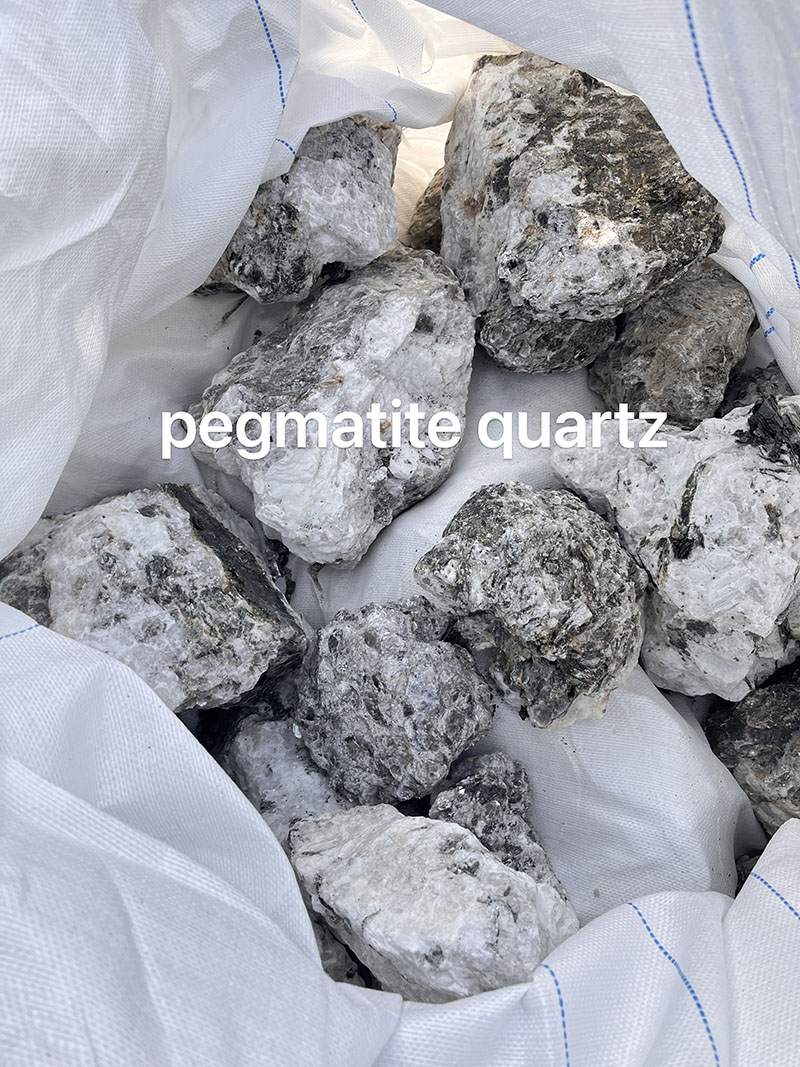Suscríbase a nuestro boletín y sea siempre el primero en enterarse de lo que está sucediendo.
Industrial types and uses of quartz, how to sort it
Sep 03, 2024Quartz is widely distributed in nature, and its formation causes are varied. At present, the main types of quartz mineral resources include natural crystal, vein quartz, granite pegmatite quartz, quartzite, quartz sandstone, powder quartz and quartz conglomerate. Among these types, the types of deposits that can be used as raw materials for high-purity quartz are mainly natural crystal, vein quartz and granite pegmatite quartz.

1. Natural crystal: High-purity quartz was originally based on primary and secondary natural crystals, and was processed through careful selection and purification. However, due to the limited reserves of natural crystals, poor mining conditions, scarce resources and high prices, it is difficult to meet the needs of large-scale production. In addition, the chemical composition of mineral crystals is affected by changes in the formation environment, resulting in large fluctuations in the chemical composition of raw materials in large-scale industrial applications, which brings difficulties to standardization and cannot meet the requirements of high-purity quartz high-end products for large quantities and stability. Therefore, natural crystals are currently mainly used to make crystal crafts. At the same time, natural crystals with pure texture are still used as raw materials for the production of optical crystal materials and piezoelectric crystal materials.
2. Vein quartz: The main application area of vein quartz is the production of silicon micropowder with (SiO2)99%~99.9%. In addition, if the high-temperature explosion-proof technical indicators of vein quartz meet the standards, it can also be used as a raw material for metal silicon smelting. Vein quartz with uniform color, few impurities, high hardness and oily luster is also a high-quality sand material for making artificial quartz plates. Because vein quartz has a high SiO2 content and a low Fe2O3 content, it is not suitable for use as a general siliceous raw material, so it is one of the ideal mineral raw materials for processing high-purity quartz.
3. Pegmatite quartz: Pegmatite quartz, also known as granite quartz. Although the quartz content of granite pegmatite quartz is only about 30%, its quartz grains are very coarse and can be completely separated from the gangue after grinding, and the impurity content in the monomer quartz is extremely low. Pegmatite quartz can be used as a raw material to produce high-purity quartz.
4. Powder quartz: Due to different origins, the chemical composition of powder quartz is also different. Its main component is SiO2, and the content is generally between 95% and 98%. In addition, it also contains impurities such as Fe, Mg, Al, Ca, Li, Na, K, Ge, and B. Powder quartz ore is widely used in many fields, such as ceramics, insulating materials, glass fibers, plastic fillers, refractory materials, rubber, thermal insulation materials, and precision casting. As a new generation of industrial mineral raw materials, it shows significant application value.
Due to the different types of quartz and associated minerals. The characteristics presented on the surface are also different. The ore faces certain challenges when it is selected.
MINGDER artificial intelligence photoelectric sorting technology has been applied in the field of quartz ore sorting. This technology can be intelligently sorted according to the multi-dimensional characteristics of the ore, such as texture, color,glossy,shape, etc. In terms of quartz sorting, the artificial intelligence photoelectric sorting macihne can effectively separate quartz from other minerals and improve sorting efficiency and accuracy. For example, the artificial intelligence sorting machine produced by Hefei Mingde Optoelectronics Technology Co., Ltd. has achieved remarkable results in the application of feldspar and quartz sorting. The equipment can accurately identify and sort feldspar separation of pegmatite-type quartz ore, white silica and white potassium sorting, etc. The application of these technologies helps to improve the overall efficiency of ore processing, reduce costs, and reduce the impact on the environment.